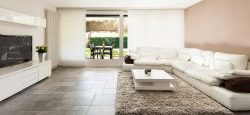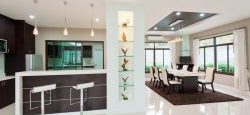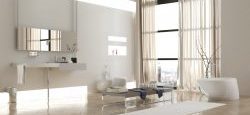Hydronic Heating
A beautiful, clean and efficient heating solution.
Hydronic heating is simply the most comfortable way to heat your home. For a new house, warm water flows though pipes embedded in the concrete slab. This warms the floor and avoids cold drafts. For existing houses, the pipes can be installed over the existing floor, raising the level of the floor somewhat, or hot-water radiators can be used.
In the long-term, hydronic heating can be cost effective. In addition, if you use solar hot water roof panels as the primary heat source, it can be the greenest method of heating your home.
We use Rehau, Uponor and Wavin hydronic pipes. All are top quality Pex a pipes, with an oxygen barrier to prolong system life.
If you are renovating, it is still possible to install in-floor heating, provide you don’t mind the floor being 50mm higher than previously.
Also consider using hydronic radiators in each room. While not as effective as in-floor heating, hyrdonic radiators can nevertheless be a much better solution than other alternatives.
For some further information, read this Hydronic Heating Fact Sheet
Solar Hot Water
A solar hot water heater can provide a very high percentage of your hot water needs in our region. The ratio of free solar energy to electricity used by the booster is referred to as the “solar contribution”. In other areas of Australia, the solar contribution can be as low as 60%.
With our systems, in our region, it can be as high as 95%.
This is due to a number of factors. First and foremost our region experiences high levels of solar radiation. Evacuated tubes are an excellent choice here because they remain efficient even with low air temperatures. Lastly, our systems use a timer to avoid the booster coming on at inappropriate times.
We do not sell gas boosted systems. The electric booster is cheaper upfront, requires less maintenance, and needs to be used rarely (unless of course you have teenagers whose skin turns pink and wrinkly from standing under the shower too long!).
Lastly, there is no such thing as green methane (the principal component of natural gas), whereas it is possible to buy green electrons by signing up to green power for a small extra charge.
Combined Systems – Solar Hot Water and Hydronic
A combined system sounds good in theory – one tank, killing two birds with one stone. But there are complexities to consider. Potable hot water must be kept hot to avoid legionaires disease, 60 degrees or more, so when the temperature gets too low the booster will come on to restore the temperature to avoid that. This makes it difficult to extract all of the available heat from the tank, and prevents the roof collectors working as efficiently as they otherwise could. However a combined system may attract STCs (Smallscale Technology Certificates).
DIY
Are you an owner builder?
We can help you design your system. We can supply or help you find the bits you need, and can assist you to install it. Send us your plans and we can talk about your project.
Windows
Windows are a major source of heat loss. Double glazed windows have an R-value of at most R0.4 ( compare that to the R-value of the insulation in the roof which is usually R4 or R5). Symphony double-cell honeycomb blinds have an R-value of R.65, which means the windows combined performance is greater than R1. They achieve this by using side tracks to prevent air circulating past the cold glass. They also they look great, plus they are cheaper than just about anything else you will find in Australia.
Best thermal performance – better than heavy curtains with pelmets
Lowest price window treatment
Looks fantastic!












